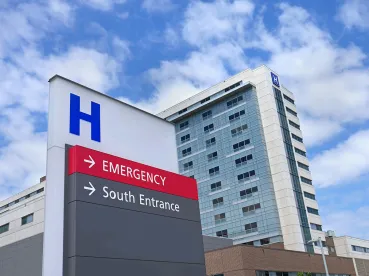In a prior blog post, we discussed CMS’ Hospital Price Transparency Rule at 45 C.F.R. § 180.10 et. seq., effective January 1, 2021 (the “Rule”), which requires hospitals to make public “a machine-readable file containing a list of all standard charges for all items and services.” Specifically, the Rule requires hospitals to post (1) a description of each item or service provided by the hospital; (2) the gross charge that applies to each individual item or service; (3) payer-specific negotiated rates that apply to each item or service for which a payer negotiated rate has been established. Each payer negotiated price must be clearly associated with the name of the applicable third-party payer and plan; (4) de-identified minimum negotiated rates that apply to each item or service; (5) de-identified maximum negotiated rates that apply to each item or service; (6) discounted cash prices that apply to each item or service; and (7) CPT, HCPCS, or other billing codes used by the hospital for purposes of accounting or billing for the item or service.
In a study published on March 16, 2021, Health Affairs found that out of the largest 100 hospitals in the U.S. (by certified bed count), 65 were “unambiguously noncompliant.” 12 of these 65 (18%) did not post any files or provided links to searchable databases that were not downloadable and 53 (82%) either did not include the payer-specific negotiated rates with the name of payer and plan clearly associated with the charges or were in some other way noncompliant. The data informing this study was pulled from late January 2021 to early February 2021.
This study was even referenced in an April 13, 2021 letter from the House Committee on Energy and Commerce and its Subcommittee on Health (the “Committee”) to Secretary Becerra of the U.S. Department of Health and Human Services (“HHS”) whereby the Committee reported concern over the lack of compliance with the Rule and urged HHS to “revisit its enforcement tools, including the amount of the civil penalty [$300 per day (adjusted annually) or a maximum penalty of $109,500 per year], and to conduct regular audits of hospitals for compliance.”
Perhaps not coincidentally, CMS has begun to issue “Warning Notices” to hospitals deemed non-compliant, requiring full compliance within 90 days. It is not clear whether notified hospitals are proceeding to comply.
As noted previously, the Rule is considered to be extremely burdensome and costly for hospitals. Critics have claimed, and there would appear little doubt, that CMS vastly underestimated the cost of compliance. While some argue that the costs to comply with the Rule far exceed any potential penalty for failure to comply, it is unlikely that CMS will tolerate long term and intentional non-compliance. We will be sure to stay informed and provide updates on any future developments.




 />i
/>i

